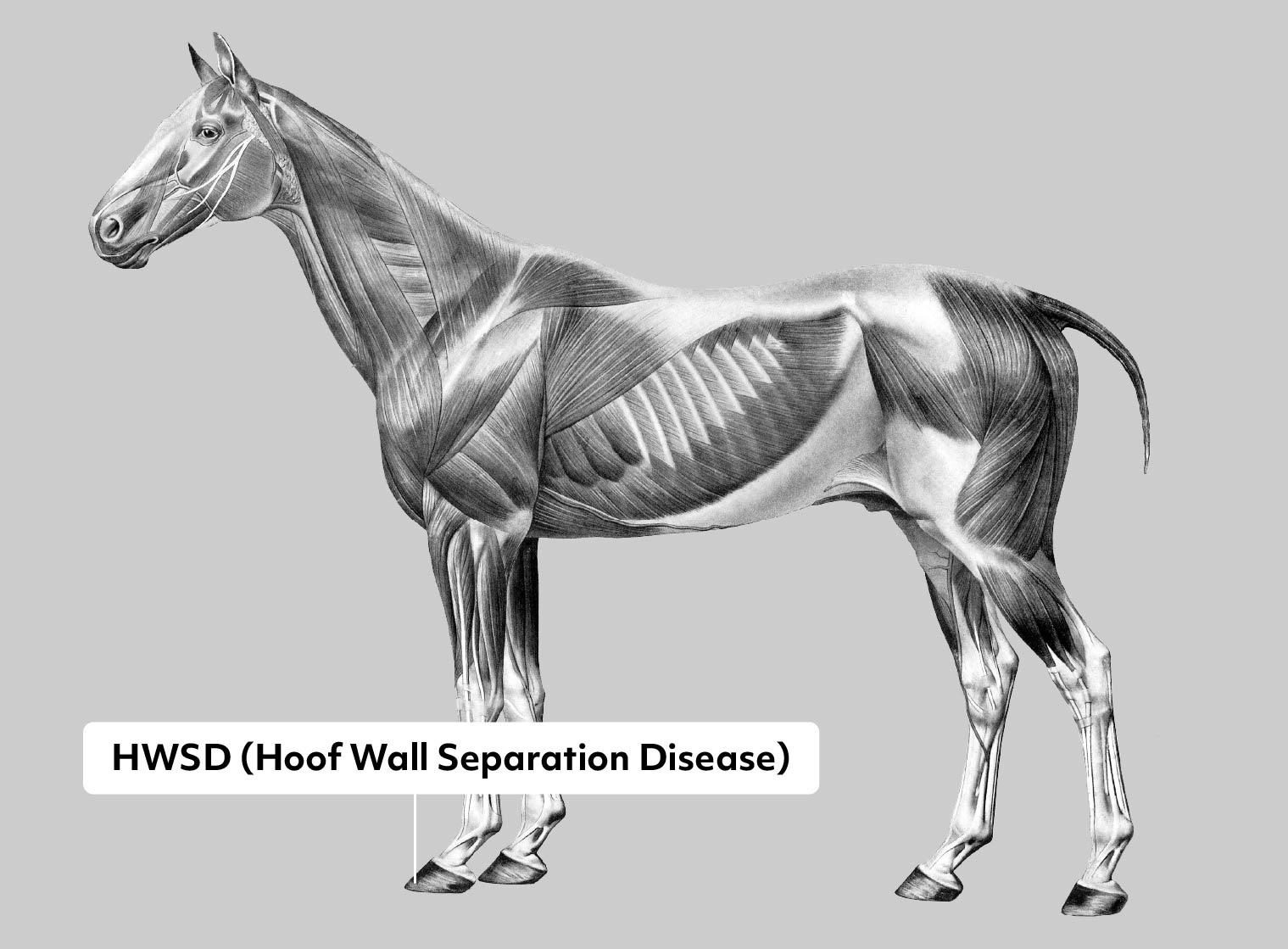Hoof Wall Separation Disease (HWSD)
Gene or Region: SERPINB11
Reference Variant: -
Mutant Variant: C
Affected Breeds: Connemara
Research Confidence: High Confidence - Strong association and functional data in studied population
Explanation of Results: hwsd/hwsd = homozygous for Hoof Wall Separation Disease, trait expressed hwsd/n = heterozygous for Hoof Wall Separation Disease, carrier n/n = no variant detected
Hoof Wall Separation Disease: Genetic Causes, Diagnosis, and Treatment in Horses
Hoof Wall Separation Disease is characterized by separation and breakage of the dorsal hoof wall extending up from the sole. Affected ponies begin showing symptoms at less than 6 months of age, and often develop chronic laminitis. Frequent hoof trimming and glue on shoes can help manage the condition. Hoof wall separation disease is an autosomal recessive disorder, thus a pony must inherit two copies (HWSD/HWSD) to show symptoms. Ponies with only one allele (HWSD/n) are known as carriers due to their ability to produce affected offspring.
Gene Information
SERPINB11 is a serine protease inhibitor of unknown function. In normal horses, it is highly expressed in the corony band. However, the insertion associated with HWSD results in a premature stop codon, resulting in an incomplete protein and greatly decreased expression.
References
Finno CJ et al., “SERPINB11 frameshift variant associated with novel hoof specific phenotype in Connemara ponies.” (2015) PLoS Genet. 11: e1005122. PMID: 25875171
More Horse Health
Occipitoatlantoaxial Malformation 1
Occipitoatlantoaxial Malformation 1 (OAAM1) is an inherited developmental condition predominantly found in Arabian horses, characterized by abnormal development of the cervical vertebrae leading to compression of the upper cervical cord and subsequent neurological damage.
Polysaccharide Storage Myopathy
Polysaccharide Storage Myopathy (PSSM) is a glycogen storage disorder in which affected horses have chronic episodes of exertional rhabdomyolysis (“tying-up”). Acute symptoms are an unwillingness to move and muscle damage following exercise. Moderate symptoms can usually be managed through a low-sugar/starch diet and exercise.
Recurrent Laryngeal Neuropathy
Recurrent Laryngeal Neuropathy (RLN) is a disease that results in loss of the neurons that open the larynx, significantly affecting performance in Thoroughbreds and other sport horses. It is an important issue for horses in competitive events because the resultant paralysis of the larynx leads to obstruction of air flow during intense exercise, creating the abnormal inspiratory noise that gives RLN its common name: “roaring”.
